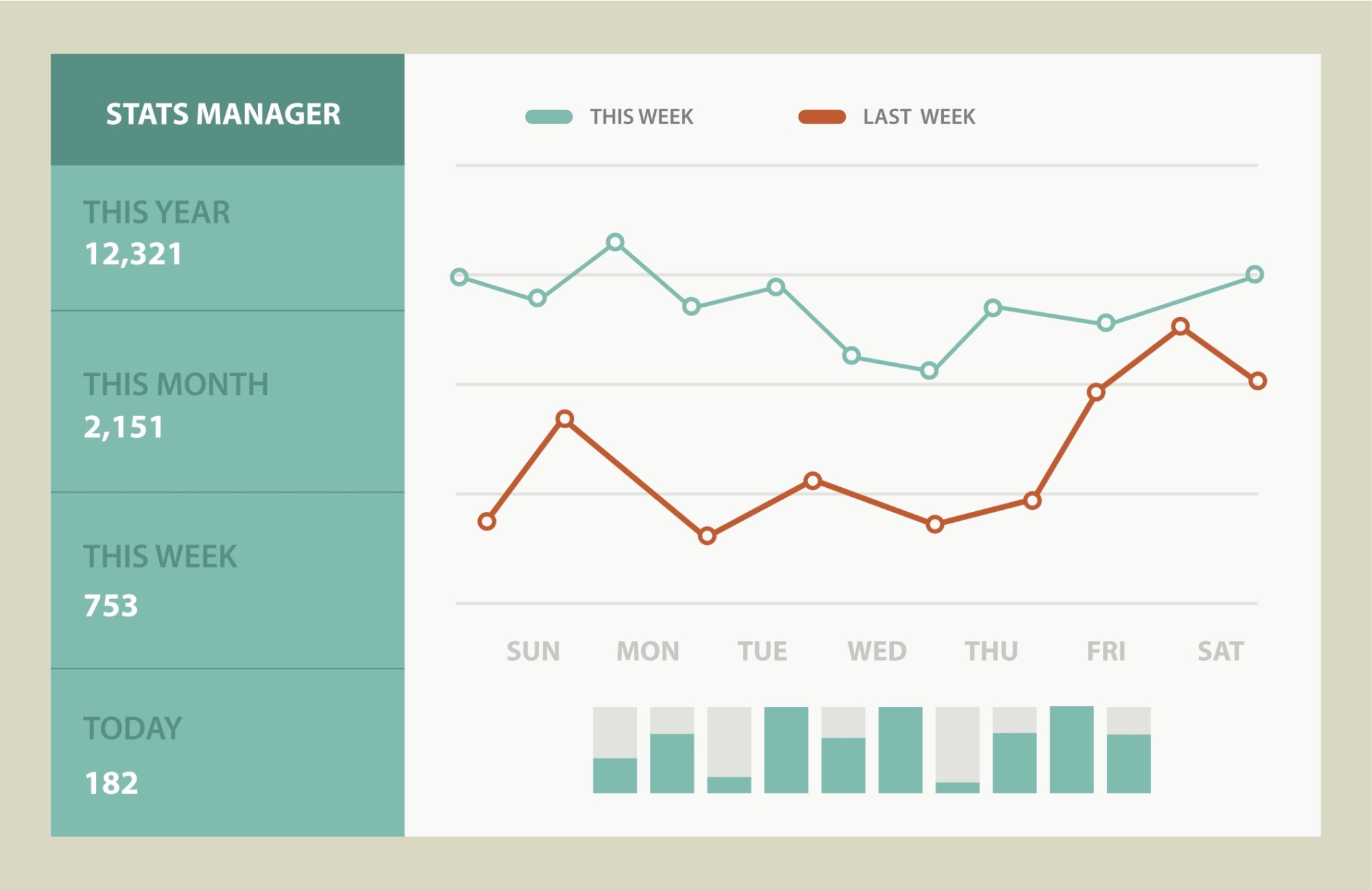What goes into building an email marketing calendar? Each year, our team of professional writers and editors plan an email and social media campaign calendar for OutboundEngine’s 10,000 customers. The content they plan spans across industries from real estate to financial services, making it safe to say they know their stuff. So, we asked them what it takes to put together a solid email marketing calendar for the entire year. Here are the nine steps they shared.
1. Look Back at Your Previous Year
First, take a look at your to-do list from the last few months. Did you have any content goals or ideas from last year that you didn’t get to? Decide if they are still relevant, and start your new list with these ideas if so. This accomplishes two tasks. You won’t feel like you have unfinished business or ideas you didn’t implement and you also don’t have to feel like you’re starting from scratch.
2. Evaluate Your Efforts
Evaluate your content. Hopefully, you’re monitoring performance regularly, but if you haven’t been, then look at the past six months overall.
If you send email newsletters, ask these questions:
- Which email topics got the best click-through and open rates?
- If you write blog posts, which ones got the most traffic?
- With social media, which posts got the most engagement – shares, likes or comments?
Note which topics or techniques you want to carry over into next year.
We’ve found that the most successful content for our customers was timely, so related to an upcoming holiday like Mother’s Day. Content that helped people in a concrete way, like campaigns that highlighted ways to save money, were also very popular.
3. Decide on Your Priorities and Goals
Maybe you want to grow sales by 30 percent. Or maybe your focus is to gain 200 new customers next year. Whatever your goals are, ask yourself: how can your content help you achieve those goals?
Remind yourself of these goals and priorities when you feel stuck or frustrated. The end game is worth the effort.
Want to dig deeper? Read about Warren Buffett’s strategy to ruthlessly focus on your priorities.
4. Commit to a Schedule
Once you’ve decided what your priorities are, decide what schedule you can reasonably commit to. This is crucial: make your schedule attainable. There’s nothing more de-motivating than feeling like you’re unable to live up to the goals you’ve set.
We’ve found the most success with regularly scheduled email newsletter campaigns for our customers. Two per month is the sweet spot for us, but your publishing schedule will be influenced by your industry and your audience.
Decide what’s sustainable for you: once a week, every other week, or even once a month. Whatever the case is, stick to it (there’s one caveat to this, which we’ll cover in step 9).
5. Look at Your Calendar
 Now that you know what you can commit to, start scheduling your content for specific days on your calendar. Then you’ll be able to determine how many ideas you’ll need to come up with for the month, quarter or year, depending on how far in advance you want to plan.
Now that you know what you can commit to, start scheduling your content for specific days on your calendar. Then you’ll be able to determine how many ideas you’ll need to come up with for the month, quarter or year, depending on how far in advance you want to plan.
Start looking for your own notable dates.
- Do you have a business anniversary or special event you want to celebrate?
- Do you have a seasonal sale or offer?
- Are there special events happening every year?
Add these to your calendar. Include general holidays or seasonal ideas if they make sense for your business. For instance, a general contractor could share advice on weatherproofing before winter. A real estate agent might write a newsletter with top spring cleaning tips.
Make sure you’re spending most of your time delivering helpful content marketing, not simple self-promotion.
Bonus Content: Grab a copy of our 10-Step Guide to Build an Email List From Scratch
6. Schedule Everything
Start with a publish or send date. Once you have that date, work backward so you know when you need to start. Make sure you give yourself enough time for creation, review, and testing. Testing includes checking images and links, and confirming your content appears the way you want it to across various platforms and email clients.
Let’s use a blog post as an example:
- Monday, 1/1: Pick a topic.
- Wednesday, 1/3: Write the first draft.
- Thursday, 1/4: Make edits and add images.
- Monday, 1/8: Build an email template.
- Tuesday, 1/9: Send email.
In this example, you want to give yourself a minimum of 8 days to complete this email send.
This will likely have to shift depending on your changing schedule. Plan around any holidays, vacation time, or long meetings that will mean you’re away from your desk or not working. Be sure to create and schedule content ahead of time for these cases.
7. Find and Fill in the Gaps
Once you’ve filled in all of your personal, seasonal and holiday ideas for the next year, see how many topics you still need. Hopefully, you have an ongoing idea file, but if not, take a few minutes and brainstorm topics you want to write about, questions your clients always ask you or trends in your industry. Continue until you have enough ideas for your email marketing calendar.
Additionally, if you don’t have an idea file, start one. It’s always helpful to have backup ideas in case something doesn’t work out. You may also come across a trend or other timely piece that needs to run at a specific time. Keep track of these ideas. You can always use them somewhere – in your newsletters, on your blog or in your social media posts.
8. Add in Social
 Whatever format your primary content takes, you should publicize it on social media. When you’re researching your topic, you will likely run across multiple sources that you don’t use in the content itself. Save them!
Whatever format your primary content takes, you should publicize it on social media. When you’re researching your topic, you will likely run across multiple sources that you don’t use in the content itself. Save them!
Here at OuboundEngine, we include helpful links with our email newsletters (generally, three). In addition, we tease the upcoming campaign on social media and then announce it once it’s published. Then we publish a few more social media posts with related content.
This approach allows you to continue promoting your content without boring your audience by posting the same things over and over again.
9. Make Measuring and Adjusting Part of Your Process
Measurement can be scheduled just like content. You may evaluate your content weekly, monthly, quarterly or whatever time frame works for you. Most of all, make sure that you are looking at your efforts regularly, analyzing what’s working and adjusting as necessary.
As a result, you might see that some kinds of content are working really well for you. You may want to then include similar content in the future, replacing other topics. Or, the opposite might be true and you may need to adjust by taking out certain kinds of content. Or you may not be publishing frequently enough, causing a drop in engagement.
If you’re scheduling your content monthly or quarterly, you’ll also need regular times to plan for future topics and publication schedules.
By following these steps, especially regularly evaluating your efforts, you’ll write the best content possible, satisfy your readers and have a rich email marketing calendar planned in advance.



![Better Email Etiquette Equals Better Marketing Results [16 Rules]](https://www.outboundengine.com/wp-content/uploads/shutterstock_411184843-1-400x250.jpg)

